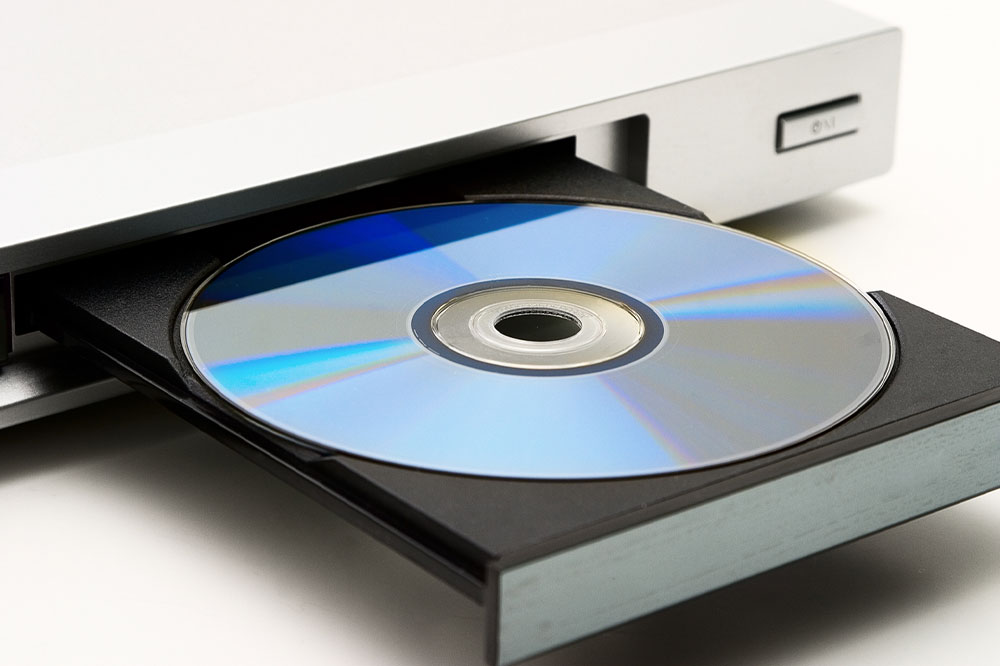
Everything to know about a DVD
A digital versatile disc or DVD is an optical disc containing data, including audio and video. Although there are many other kinds and formats, read-only, writable, and erasable, DVDs are the most common. As the formats are not interchangeable and because each type can only work with particular disc drives, it is crucial to comprehend their differences. The evolution of new effective alternatives such as USB and Hard disk reduced the usage of DVDs.
Components of the DVD video player
DVD video players have three primary components, an internal electronic circuit board, an optical assembly system, and a disc drive mechanism.
- Drive disc mechanism
A motor that drives the disc in a circular motion makes up the disc drive mechanism. The mechanism will also include a loading tray called a disc feed that receives DVDs from users. - Optical apparatus
The primary components of the optical system are the laser beam, lenses, prism, photodetectors, and mirrors. This mechanism’s output will serve as the disc input. A single platform holds the photodetector and laser system. - Circuit board
The PCB resembles any other electronic circuit in appearance. On the PCB, the electronic layout must be drawn with all of the ICs’ resistors and capacitors in the proper positions.
Various DVD-video formats
NTSC and PAL are the two primary DVD-Video formats.
- The National Television System Committee, or NTSC, is a common video format used in some countries. It has a 720×480 resolution and a frame rate of 29.97 frames per second.
- Another popular video format used primarily in Europe, Australia, and portions of Asia is called PAL (Phase Alternating Line). It has a 720×576 resolution and 25 frames per second frame rate.
In addition to NTSC and PAL, several DVD-video formats have been created to meet certain regional or technological needs. They consist of SECAM, NTSC-J, NTSC-C, NTSC 4.43, and PAL-M.
Various types of DVDs
The storage capacities of the DVDs are just one aspect that varies. Below are the different key types of DVDs:
- DVD-ROM
The most popular variety is the DVD-ROM, used to disseminate movies and audio recordings of musical performances. On this type of DVD, data cannot be erased or rewritten. - DVD-RAM
This type of recordable, rewritable DVD is rarely used. A DVD-RAM standard permits more than 100,000 recordings, making it ideal for journal backups (backup copies). Moreover, this DVD type can typically be used without software to write specific patterns, much like an HD. - DVD-R
This type of DVD has higher acceptability in a wider range of gadgets. It is the best option for recording movies and is supported by almost all DVD players. The DVD-R, like its forerunner, the CD-R, only permits recording once and allows for permanent storage of data. - DVD+R
This type is comparable to the DVD-R because it has 4.7GB of storage capacity. Moreover, the DVD+R only allows for a single recording and does not allow for data deletion. The recorded data on a DVD+R can be accessed more quickly on a DVD-R.
What are DVD video converters?
DVD video converters are computer programs that let users change the format of DVD video files so that they may be played on various gadgets, including computers, cellphones, and tablets. Both free and commercial DVD video converter tools are readily available, each with unique features and functionalities. Users normally need to insert a DVD into their computer’s DVD video players and choose the desired output format and settings before using a DVD video converter.
Users should only use DVD video converters for personal, non-commercial use or for the content they have the legal right to convert since it is vital to know that copyrighted DVD content conversion without authorization is unlawful in many countries.
DVD video games and evolving alternatives
DVD video games of cricket, tennis, etc., were a source of entertainment back in the 90s. In the past decade, there has been a downfall in people purchasing DVDs to watch movies and DVD video games due to the introduction of convenient network video streaming services, mobile apps, and the proliferation of unauthorized downloads.
Gone are the days when DVDs were common names. The Blu-ray is now a “technological replacement,” offering so much data on a single-layer disc. Both technologies are being used less frequently due to the rise in the number of services streaming movies over the Internet (streaming) and the use of more user-friendly data storage devices.




